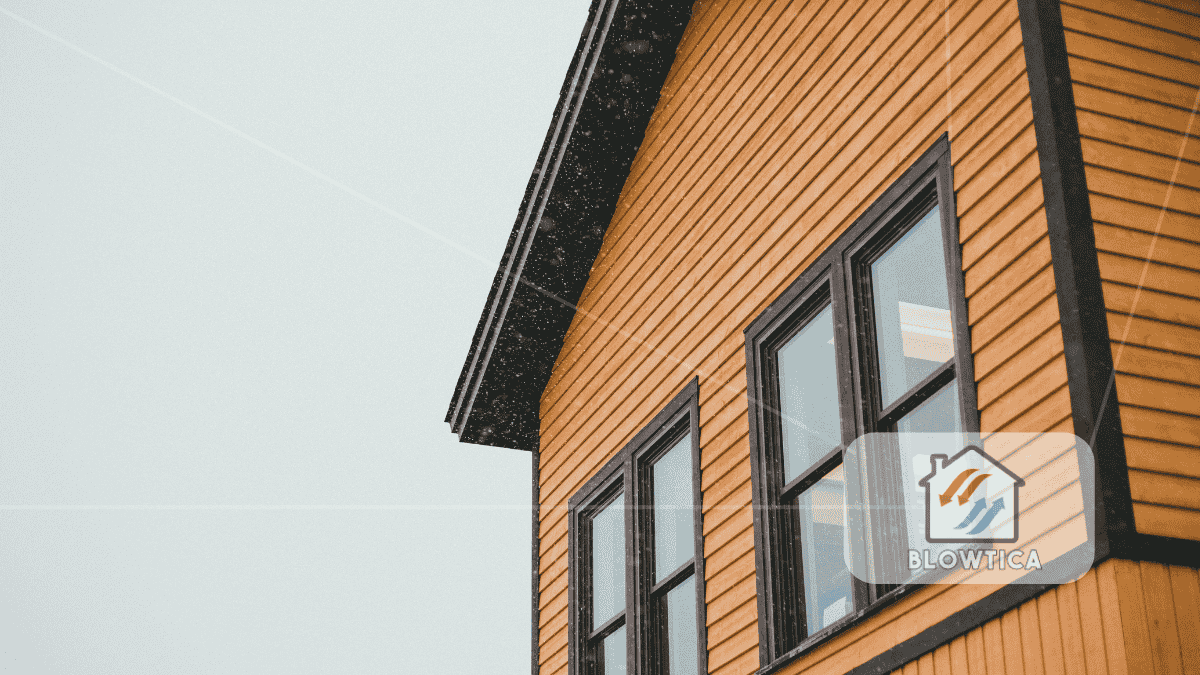
A drafty home wastes energy. A damp one invites mold, rot, and bigger problems you won’t want to deal with later. The good news is, that weatherproofing your home is one of the smartest, most practical improvements you can make. It keeps you comfortable, protects your investment, and lowers utility bills, often all at once.
This guide walks through exactly how to do that. We’ll cover where drafts and moisture come from, how to block them, and what tools, materials, and habits help you stay ahead for the long term.
Why Weatherproofing Matters More Than You Think
Your home’s building envelope its walls, windows, roof, and foundation, is what keeps outside air and moisture where it belongs: outside. But over time, cracks develop. Seals wear down. Gaps widen. When that happens, conditioned air escapes while moisture creeps in.
The result is higher energy bills and rooms that are too hot or too cold. Worse, moisture can sneak into places you can’t see, slowly damaging insulation, drywall, and wood framing.
Weatherproofing your home solves both problems at once. Done correctly, it reduces energy loss and keeps moisture from getting into the structure, all while improving air quality indoors.
Step 1: Seal the Gaps from Top to Bottom
Start at the Foundation
Check the foundation walls for visible cracks or gaps. Small cracks can be sealed with masonry caulk or hydraulic cement. Larger or horizontal cracks might be a sign of a bigger issue and should be checked by a professional.
If you have a crawl space, make sure it’s enclosed and covered with a vapor barrier. You can also add rigid foam insulation to the perimeter walls for extra protection.
Windows and Doors: Common Trouble Spots
Drafts often enter through the edges of windows and doors. Use your hand or a lit incense stick to feel for air movement. Apply weatherstripping around the edges and add a door sweep at the bottom of each exterior door.
Older windows can benefit from interior storm panels or shrink film during winter. If they’re in poor shape or single-pane, replacing them with energy-efficient models can pay off in the long run.
Don’t Forget the Attic
Heat rises and can escape quickly if the attic isn’t sealed properly. Look for gaps around light fixtures, hatches, and vent pipes. Seal those with fire-rated caulk or spray foam.
Add or top off insulation in the attic. Blown-in cellulose and fiberglass batts are both effective. Your attic should have 10 to 14 inches of insulation for optimal performance.
Step 2: Stop Moisture at Its Source
Most moisture problems begin outside but cause the most damage inside. Your job is to stop water from getting in and control the humidity inside your home.
Inspect the Roof
Check your roof twice a year. Look for missing shingles, damaged flashing, or moss buildup. Replace anything that’s worn or broken. Roof leaks can cause long-term damage if ignored.
Also, ensure that your attic is ventilated properly. Good airflow prevents condensation and mold.
Keep Gutters Flowing
Clogged gutters allow water to spill down walls and collect near the foundation. Clean them regularly and consider installing gutter guards if you have nearby trees. Downspouts should carry water at least four feet away from your home.
If water still pools near the base of your house, regrade the soil or install a French drain to redirect it.
Seal Exterior Gaps
Any place where wires, pipes, or vents enter your home is a potential leak point. Use exterior-grade caulk or weatherproof sealant to block those gaps. Silicone or polyurethane formulas work best outdoors.
Step 3: Control Humidity Indoors
Even with a sealed home, indoor moisture can build up from daily activities like cooking or showering.
Use Proper Ventilation
Install exhaust fans in the kitchen and bathroom, and make sure they vent outdoors. If your fans are old or noisy, upgrade to models that are quiet and efficient.
Dryer vents should be sealed well and cleaned regularly. If your dryer is venting warm air inside, you could be adding a lot of unwanted moisture to your home.
Adjust Habits
Small changes can make a big difference:
- Cover pots while cooking.
- Use bathroom fans after showers.
- Open windows on dry days.
- Avoid drying clothes indoors when possible.
Add a Dehumidifier
In humid climates, a dehumidifier helps maintain indoor humidity between 30% and 50%. This reduces the risk of mold, dust mites, and musty smells.
Step 4: Make Insulation Work Harder
Insulation protects your home from extreme temperatures, noise, and moisture. But not all insulation performs the same.
Choose the Best Type for the Job
- Fiberglass batts are easy to install but can sag over time.
- Blown-in cellulose fills gaps well and resists pests.
- Spray foam expands to fill every crack, sealing and insulating at once.
Look at the R-value of each material. Higher R-values provide better insulation. Match the insulation to your climate zone for maximum efficiency.
Focus on Key Areas
- Attics need at least R-38 insulation, and sometimes more in colder regions.
- Basement walls and rim joists are common sources of energy loss. Seal gaps and add foam board insulation.
- Exterior walls are harder to upgrade, but blown-in cellulose can be added through small holes without removing drywall.
Step 5: Tools and Materials That Make a Difference
You don’t need to be a contractor to weatherproof your home. A few basic tools will help you get the job done:
- Caulking gun and caulk (silicone for wet areas, acrylic for dry)
- Spray foam for large gaps
- Adhesive weatherstripping
- Door sweeps
- Smoke pencil or incense stick (for detecting drafts)
- Infrared thermometer
- Ladder and safety gear
Having these on hand helps you handle issues quickly and easily throughout the year.
Step 6: Adapt to Your Local Weather
Different regions face different challenges, so your approach should match your climate.
- Cold areas should focus on sealing drafts and boosting insulation.
- Hot and humid areas need better ventilation and moisture barriers.
- Dry, hot climates benefit from reflective insulation and shading.
Ask a local expert or building supply center if you’re not sure what’s recommended in your area.
Step 7: Make Weatherproofing a Year-Round Habit
Weatherproofing isn’t a one-time project. Build it into your seasonal home maintenance plan.
- In spring, clean gutters and check for water damage.
- In summer, check for indoor humidity or condensation issues.
- In the fall, reseal windows and doors and inspect attic insulation.
- In winter, monitor for cold spots and moisture buildup indoors.
Fixing small problems early keeps them from turning into expensive repairs later.
When to Call a Professional
Some jobs are best left to trained experts:
- Blower door testing identifies hidden leaks.
- Mold remediation is necessary if mold covers a large area.
- Major insulation work may involve removing drywall or handling old materials like asbestos.
- Roofing and siding repairs can be dangerous without the right equipment.
Hiring a professional ensures the job gets done safely and correctly.
Final Takeaway
Weatherproofing your home is one of the most practical ways to improve comfort, cut energy bills, and protect your living space. It doesn’t have to be expensive or complicated, but it does require a plan and a bit of regular upkeep.
Start with simple fixes, build up to bigger improvements, and tailor your strategy to your climate. The result is a home that’s quieter, drier, warmer in winter, and cooler in summer all while costing less to run.









